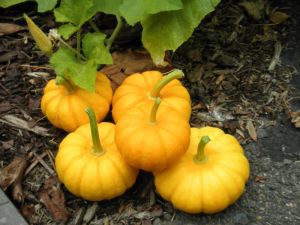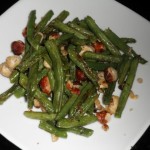The year is flying by. I’m not ready for the cold weather, and our hummingbirds are still here and I’ll miss them. But what can you do. I’ve updated my GF breakfast list here, and as a bonus, here are some Gluten-free and low FODMAP Peanut Butter Banana Muffins.

There have been a lot of new papers relating to Celiac and GI health out in the last month or so. Here’s a quick round up:
There are new European guidelines for the diagnosis and management of Celiac. Now, of course, diagnosis and managing shouldn’t be your job, but, well, sometimes it is. Often doctors prefer information aimed at doctors, so feel free to print it out and bring it along with you to appointments re: initial testing, nutritional testing and follow up needed. A nice summary of them from Beyond Celiac is here.
More gluten, more risk in kids? Looks like it. A new study shows that children under 5 who are at high risk of having Celiac had a higher risk when eating larger amounts of gluten. Correlation doesn’t equal causation, but it’s the largest study so far. Dr. Fasano & co have an editorial on this article, too.
Summary: more gluten, more than a slice of bread a day raises risk in children who are genetically susceptible. BUT (and this is significant) CCR suggests that other factors must be at play as well, because countries that eat more gluten don’t have more Celiac disease. So the desire to reduce Celiac needs to be balanced with the things that promote a healthy microbiome—among other things. And, of course, stay tuned!
Think beyond the tummy troubles: undiagnosed Celiac is linked to anxiety and other behavior problems in children
A new paper outlines the factors associated with the development of IBD (Crohn’s, or CD, and Ulcerative Colitis, or UC). Of course, association doesn’t mean that these things CAUSE IBD…but still, a lot to think about, especially for kids/siblings/prevention, because of the genetic link.
Highlights:
“We identified 9 factors that increase risk of IBD: smoking (CD), urban living (CD and IBD), appendectomy (CD), tonsillectomy (CD), antibiotic exposure (IBD), oral contraceptive use (IBD), consumption of soft drinks (UC), vitamin D deficiency (IBD), and non–Helicobacter pylori–like enterohepatic Helicobacter species (IBD). We identified 7 factors that reduce risk of IBD: physical activity (CD), breastfeeding (IBD), bed sharing (CD), tea consumption (UC), high levels of folate (IBD), high levels of vitamin D (CD), and H pylori infection (CD, UC, and IBD).”
The full article is here
And one more: Titanium Dioxide. There’s nothing about that that sounds particularly delicious, but it’s in a lot of foods as a whitening agent, and it’s in a ton of supplements, too. A new rodent study shows that it shifts the microbiome in ways that may increase the risk of IBD (Crohn’s, UC) and even colon cancer.
The Annual DC Gluten-free Expo has moved from the summer to October, and will be October 6th this year. It’s always a wonderful event for an even better cause—Children’s National Medical Celiac Center. It generally sells out, so if you’re interested, take a look.








 Extra bonus–if you decide to go the non-food-treat option, Food Allergy Resource & Education (FARE) now has an interactive map so that children with food restrictions can find safe houses to visit and you can add your house to the map so children and parents know that safe options are available..
Extra bonus–if you decide to go the non-food-treat option, Food Allergy Resource & Education (FARE) now has an interactive map so that children with food restrictions can find safe houses to visit and you can add your house to the map so children and parents know that safe options are available..





 Healthy life, strong bones
Healthy life, strong bones g bones and teeth, and it’s vital for the rest of our bodies, too. Nerves, muscles and even our heart depend on calcium to function. While it is easiest to build bone mass during teen years, our bodies constantly need calcium throughout our lives. It is normal to lose some bone mass with age, and bone loss tends to be greatest after menopause.
g bones and teeth, and it’s vital for the rest of our bodies, too. Nerves, muscles and even our heart depend on calcium to function. While it is easiest to build bone mass during teen years, our bodies constantly need calcium throughout our lives. It is normal to lose some bone mass with age, and bone loss tends to be greatest after menopause.
 them today at Whole Foods in Springfield…
them today at Whole Foods in Springfield…
 Finally! The FDA has issued draft guidance on gluten in medications, and the comment period is open now. In short, currently there are no specific rules for labeling gluten in medications, and gluten (or wheat, more specifically) may be used as a filler or excipient without being clearly labeled. “We encourage drug manufacturers to have accurate information about their products’ gluten content available so they can respond to questions from consumers and health care professionals. Manufacturers should pay attention to possible sources of gluten in their products, consider specifications when appropriate, and consider the impact of changes in ingredient sources or formulations on gluten content.”
Finally! The FDA has issued draft guidance on gluten in medications, and the comment period is open now. In short, currently there are no specific rules for labeling gluten in medications, and gluten (or wheat, more specifically) may be used as a filler or excipient without being clearly labeled. “We encourage drug manufacturers to have accurate information about their products’ gluten content available so they can respond to questions from consumers and health care professionals. Manufacturers should pay attention to possible sources of gluten in their products, consider specifications when appropriate, and consider the impact of changes in ingredient sources or formulations on gluten content.” 







